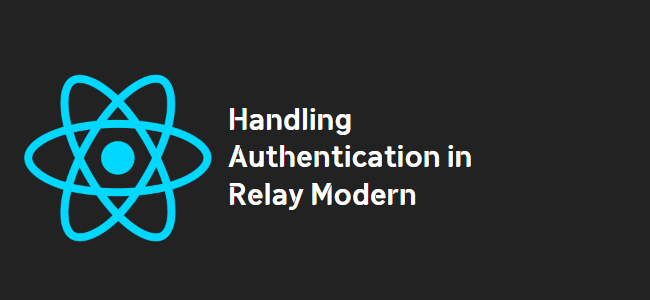
Handling Authentication in Relay Modern
In this blog post, we will discuss how to handle authentication in Relay Modern, specifically focusing on token-based authentication. If you are currently working on implementing token-based authentication in your Relay Modern application, this guide will provide you with the necessary steps to fully tie it together.
1. Re-creating the Relay Environment
When authenticating your user, it is recommended to re-create the Relay environment. This ensures that any existing cache is dropped, as the cache should be different depending on which user is logged in. By dropping the cache entirely, you can avoid any potential data leakage between users. Here’s an example of how you can re-create the Relay environment:
class App extends PureComponent {
state = {
environment: createRelayEnvironment(),
};
login = () => {
doLoginMutation({
onSuccess: () => this.setState({ environment: createRelayEnvironment() }),
})
}
// ...
}
2. Triggering a Refetch of Data
Once you have a valid token, you can trigger a refetch of the data required by the <Dashboard /> component before redirecting the user to the dashboard. This ensures that the restricted data is provided to the component. To achieve this, you can use the refetch method provided by Relay. Here’s an example:
{`class Dashboard extends PureComponent {
componentDidMount() {
const { relay } = this.props;
relay.refetch({}, null, () => {/* Optional callback function */});
}
// ...
}`}3. Handling Authentication with JWT
If you are using JSON Web Token (JWT) for authentication, there are a few additional considerations. After receiving a valid token inside the onComplete callback of the LoginUserMutation, you need to store it securely in the browser’s storage, such as localStorage. This allows you to persist the token across browser sessions.
When making GraphQL requests, you can include the token in the Authorization header. Here’s an example:
{`const token = localStorage.getItem('token');
const headers = {
'Authorization': 'Bearer ' + token,
// ... other headers
};
fetch('/graphql', {
method: 'POST',
headers,
body: JSON.stringify({query: /* Your GraphQL query/mutation */})
})
.then(response => response.json())
.then(data => console.log(data))
.catch(error => console.error(error));`}Conclusion
In summary, handling authentication in Relay Modern with token-based authentication involves re-creating the Relay environment, triggering a refetch of data, and securely handling JWT. By following these steps, you can ensure that your application handles authentication effectively and provides restricted data to authorized users.
Implementing these best practices will lead to a robust authentication system in your Relay Modern application, providing a seamless experience for your users while maintaining the necessary security measures.
